01 Background of the development of lithium-ion battery industry
The emergence of lithium-ion batteries can be traced back to the early 1970s. During this period, scientists from the United States and the United Kingdom began researching lithium-ion batteries, attempting to use lithium ions instead of lithium metals, and using carbon as the negative electrode material. This type of lithium-ion battery overcomes the safety hazards of lithium-metal batteries and has become a focus of attention. In 1980, J Goodenough discovered that lithium cobalt oxide can be used as a positive electrode material for lithium-ion batteries, laying the foundation for modern lithium-ion batteries.
Today, lithium-ion batteries, as a new type of secondary battery with high energy density, multiple cycles, and long service life, are widely used in mobile power sources, electric vehicles, home appliances, intelligent wearable devices, 3C products, and other fields. They have gradually become the main power source for new energy vehicles and energy storage, and have attracted widespread attention in recent years.
According to incomplete statistics from the High Industry Lithium Battery Industry Research Institute (GGII), 247 new investment and expansion projects were signed and implemented in China's lithium battery industry chain in 2022, including lithium batteries and materials. The total investment amount in China's lithium battery industry in 2022 exceeded 1.4 trillion yuan.
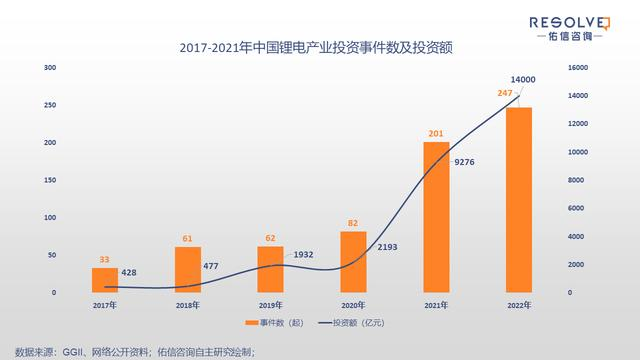
From a macro perspective, the vigorous development of the lithium battery industry is the result of the combined effects of global energy shortage, technological progress, policy support, and market demand expansion. China, as the world's largest producer and consumer of lithium batteries, is also the world's largest market for electric vehicles. With the proposal of the goal of "carbon neutrality", lithium ion battery technology can provide support for carbon neutrality in important applications such as electric vehicles, energy storage systems, smart grids, and can also reduce the country's carbon emissions and energy consumption. The lithium battery industry will trigger huge investment opportunities and market demand, promote the transformation and upgrading of the lithium battery industry, and inject new impetus into the sustainable development of the new energy industry.
02 Current Development Status of Lithium Ion Battery Industry
Since the birth of lithium-ion batteries and their entry into modern life, after years of development, they have now become a hot research field. It not only makes mobile devices more convenient, but also promotes the development of the electric vehicle industry, deeply affecting the technological upgrading of energy storage technologies, such as wind power, photovoltaic and other environmentally friendly energy. In addition, lithium batteries play an important role in personal daily life, and products such as smart homes and entertainment devices are increasingly using lithium battery technology. With the continuous progress of technology, lithium-ion batteries will play an important role in promoting the revolution of global clean energy, renewable energy, and sustainable development in the future.
2.1 Development stage of lithium-ion battery industry
On September 22, 2020, China put forward a new goal of comprehensively and effectively tackling climate change, including achieving "carbon neutrality" by 2060. Since then, the government has successively introduced a series of policy measures to strengthen carbon emission control and sustainable development, and has been committed to promoting coordinated development in the global response to climate change. Policies such as reducing corporate income tax, promoting urban public transportation, logistics vehicles, and official vehicles have brought huge investment opportunities and market demand to the lithium battery industry, and also promoted the progress and development of lithium battery technology.
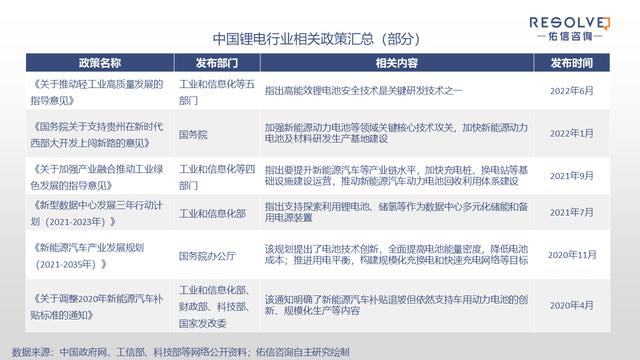
In terms of time, China has been relatively late in the application and promotion of lithium battery technology. Around 2002, China gradually promoted the use of lithium-ion battery technology in electric vehicles. Subsequently, the demand for new energy vehicles and energy storage continued to increase, and the domestic lithium-ion battery industry and application market gradually took shape. It is divided into: initial development stage, accelerated development stage, diversified development stage, and project research stage. Specifically,
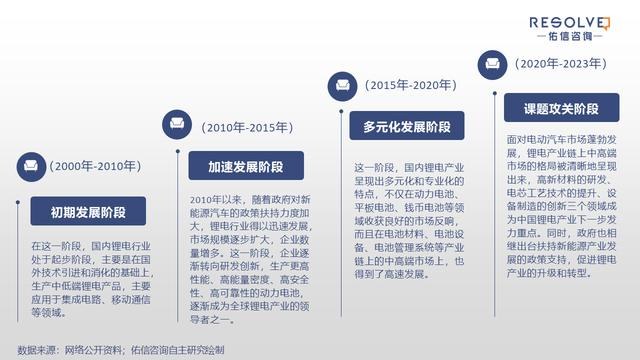
In the future, with the continuous progress of technology, the development of China's lithium-ion battery industry will enter a policy driven and technological innovation driven stage, gradually expanding the market competitiveness of lithium-ion batteries in terms of quality, safety, environmental protection, and ushering in a wider range of application space and development opportunities.
2.2 Analysis of the lithium-ion battery industry chain
From the perspective of the industrial chain, the lithium-ion battery industry includes upstream raw materials, midstream battery assembly, manufacturing, and downstream power consumption industries.
The upstream of the lithium-ion battery industry chain is mainly focused on providing raw materials. Positive electrode, negative electrode, electrolyte, copper foil and other materials are the main materials used in the production of lithium-ion batteries. Common cathode materials include lithium cobalt oxide (LCO), lithium manganese oxide (LMO), lithium nickel oxide (LNO), lithium iron phosphate (LFP), nickel cobalt aluminum ternary (NCA), etc; The negative electrode material is mostly graphite, in addition to lithium metal, lithium alloy, silicon carbon negative electrode and other materials.
The middle reaches of the industrial chain are battery manufacturers that provide processing, packaging, and assembly. The process of producing high-quality lithium-ion batteries is relatively complex, with high requirements for technology and equipment. From raw materials to finished products, multiple processes need to be strictly controlled and quality inspected. At present, Ningde Times, the leading domestic enterprise in the field of power battery, and BYD, which has developed lithium iron phosphate battery and high energy density ternary lithium battery, are more concerned in the current market. In addition, there are AVIC Lithium, Ganfeng Lithium, Yiwei Lithium, Guoxuan High tech, etc.
The downstream of the industrial chain is the main industry for the application of lithium-ion batteries. Including new energy vehicle manufacturers represented by BYD, NIO, Xiaopeng, BAIC New Energy, and Tesla, it is currently a widely used field for lithium-ion batteries. In addition, there are also enterprises producing energy storage equipment represented by Pinggao Electric, Shengyang Power Supply, Longpan Technology, etc., and enterprises producing consumer electronics represented by Apple, Lenovo, Xiaomi, and Dajiang.
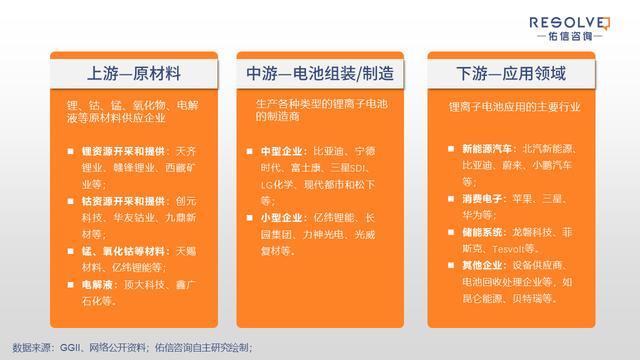
At present, the domestic lithium battery industry chain is quite complete, covering the entire industry chain from raw material production to battery manufacturing, recycling, and reuse. In the lithium battery industry chain, China has formed a complete production chain and market system, including lithium mineral resources, lithium salt mining, lithium battery materials, lithium battery manufacturing and recycling. Faced with increasingly fierce market competition, there is still significant room for improvement in China's lithium battery industry in the future.
2.3 Market scale of lithium-ion battery industry
On February 23, 2023, the Electronic Information Department of the Ministry of Industry and Information Technology of the People's Republic of China released the "2022 National Lithium ion Battery Industry Operation Situation". According to data released by the Ministry of Industry and Information Technology, the national production of lithium-ion batteries reached 750GWh in 2022, a year-on-year increase of over 130%. The total industry output value exceeded 1.2 trillion yuan, which is about twice the previous year's total industry output value of 600 billion yuan.
From 2015 to 2022, the scale of the national lithium-ion battery industry has been increasing year by year. Although there have been growth fluctuations in some years, overall, the growth of China's lithium battery industry is still very rapid and entering the fast lane of industry development.
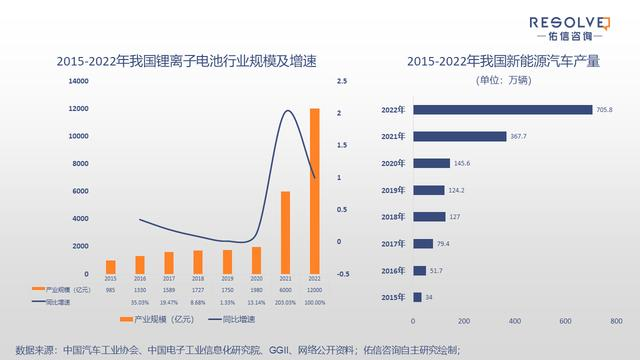
On the other hand, the continued popularity of the new energy vehicle market has driven the rapid development of the lithium-ion battery industry. The market demand is increasing year by year, and the demand for lithium-ion batteries is also constantly increasing. As a key application field of lithium-ion battery technology, new energy vehicles have higher requirements for low-carbon environmental protection, technological innovation, and performance safety. In the long run, the lithium-ion battery industry will form a full industry linkage development model, with the emergence of a group of enterprises with excellent technical strength and strong industrial layout capabilities.
From the perspective of product structure, with the rapid growth of power lithium-ion battery production, the domestic lithium-ion battery product structure has significant characteristics, and power lithium-ion batteries have become the leading force in the lithium-ion battery industry. In the structure of lithium battery products, power type lithium batteries account for 68%, followed by consumer type lithium batteries, accounting for 22%, and energy storage type lithium batteries, accounting for 10%.
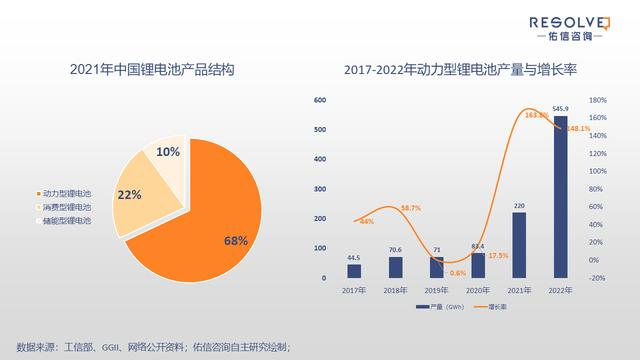
The "White Paper on the Development of China's Lithium ion Battery Industry (2023)" released by research institution EVTank shows that in 2022, the overall global shipment volume of lithium ion batteries was 957.7GWh, a year-on-year increase of 70.3%. The shipment volume of lithium-ion batteries in China reached 660.8GWh, a year-on-year increase of 97.7%, exceeding the global average growth rate. The strong market growth not only conforms to the development concept of low-carbon and environmental protection, but also promotes China's breakthrough and innovation in the field of lithium battery technology research and development, forming a certain industrial advantage.
03 Prospects for the Development of Lithium Ion Battery Industry
Lithium ion technology is one of the important technologies in the future new energy field. It not only has the advantages of high energy density, safety and reliability, but also is widely used in electric vehicles, energy storage, consumer electronics and other fields. It is also one of the mainstream energy sources in the future. Analysis shows that the development of the lithium-ion battery industry is showing the following trends:
3.1 Technological innovation will continue to drive industrial development
The future direction of lithium-ion battery technology includes high energy density, high-temperature performance, fast charging and discharging, etc., continuously promoting the improvement of battery efficiency and service life, in order to meet the higher requirements for battery performance in fields such as electric vehicles and energy storage in the future.
3.2 Industrial competition will further intensify
With the rapid development of the global new energy industry, the lithium-ion battery industry will face increasingly fierce market competition. Major enterprises will compete for market share and technological leadership through technology research and development, manufacturing cost control, and market expansion.
3.3 Battery recycling and reuse will become a new direction for development
With the further increase in the use of lithium-ion batteries in the future, recycling battery materials will become a new direction of development. Many enterprises both domestically and internationally have begun to research and develop battery recycling and reuse technologies, which will play a positive role in the sustainable development of the lithium-ion battery industry.
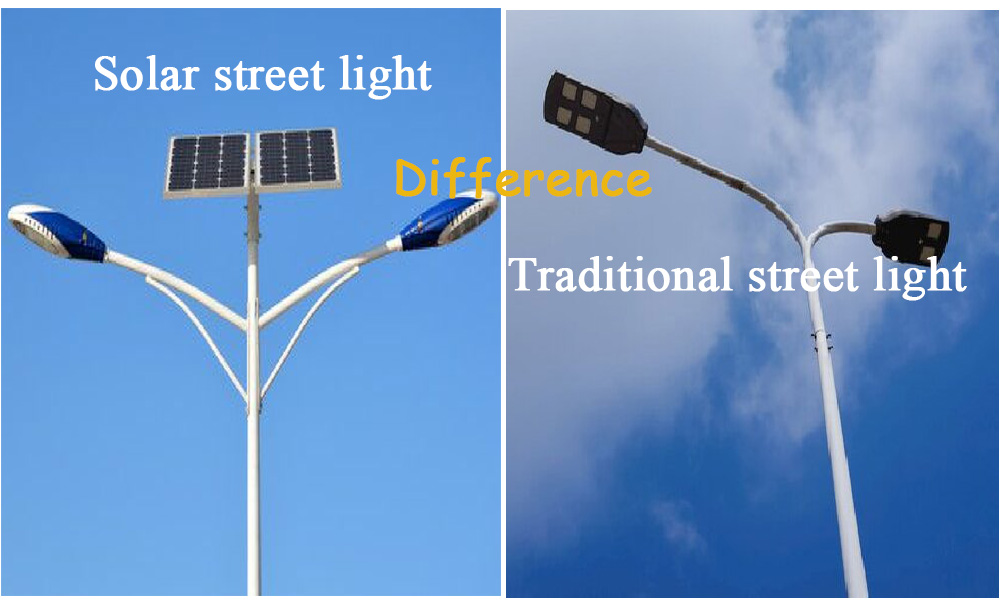
ADDRESS:Guoji Industrial Concentration Zone, Songqiao Town, Gaoyou City
Online Messages
Scan the QR code

View Mobile
Copyright ? 2021-2023 Yangzhou Borui Optoelectronic Lighting Co., Ltd. All Rights Reserved 備案號: 蘇ICP備2023016865號
Technical support: WDL